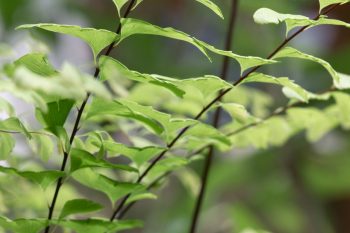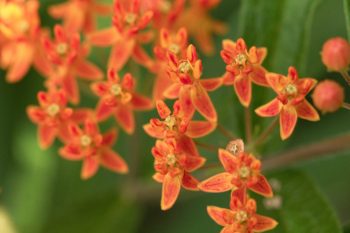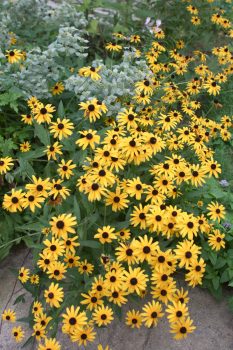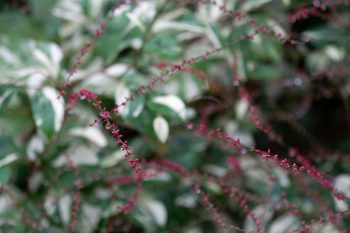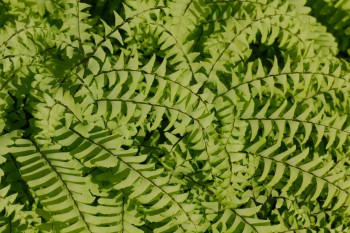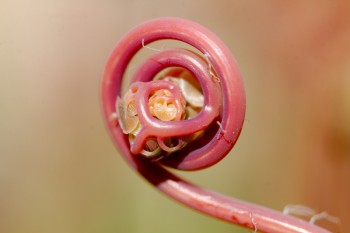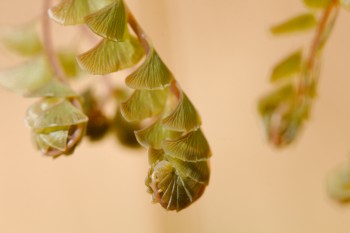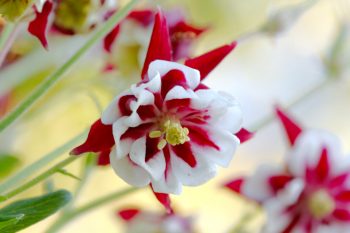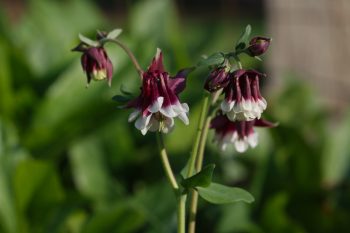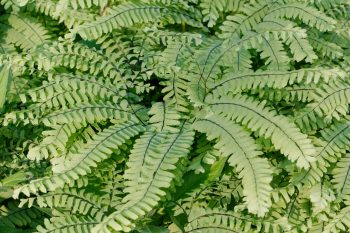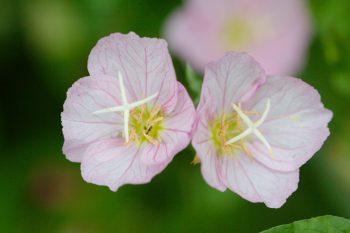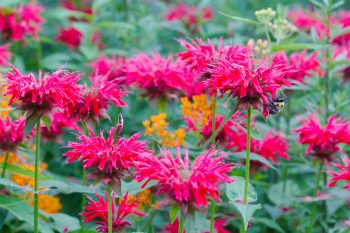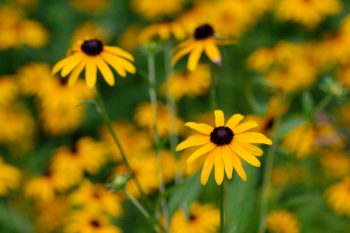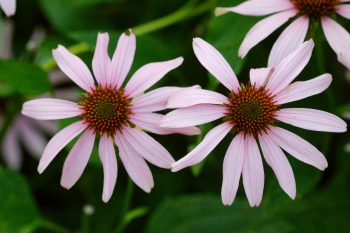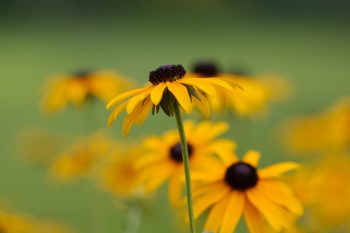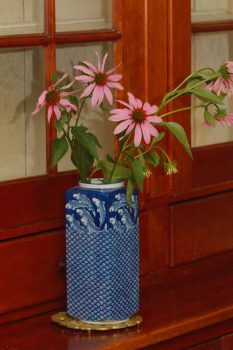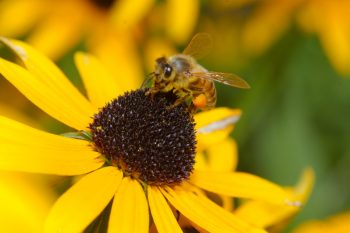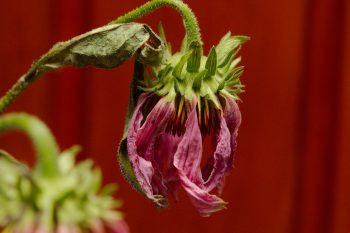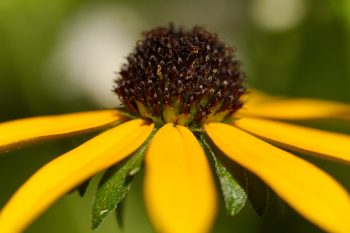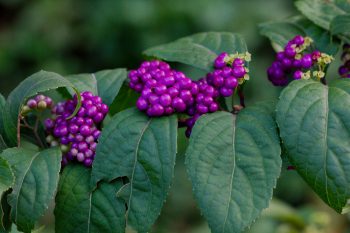My dad had a maidenhair fern growing for years and when we bought our first house I dug up a small bit from the edge. When we moved I took some from that and it’s now well established in our yard here. So, this is “dad’s maidenhair fern.” (Adiantum pedatum)
Tagged With: Native Plants
Maidenhair Fern
Butterfly Weed
Black-eyed Susans
The black-eyed Susans are the predominant source of color (except for the color green, of course) in the garden right now. They are holding up their end marvelously, I might add.
Oh, and I passed the 20,000 mark on my camera today. This is photo number 20,004 (since Christmas).
Painter’s Palette
Persicaria virginiana ‘Painter’s Palette’ is a slightly invasive perennial but nothing like loosestrife so I don’t mind it so much. It has pretty, variegated foliage and tiny, bright pink (almost red) flowers on long stalks.
Adiantum pedatum (Northern Maidenhair Fern)
Ages ago my dad planted a maidenhair fern (Adiantum pedatum) in his back yard. I think he dug it up somewhere or other but I’m not 100% sure of that. It grew quite well there and when we had our house in Gaithersburg he let me dig up a piece of it and plant it in our yard. I’m glad we did that because when my parents finally got an air conditioner in their house the condenser unit went where the fern had been. I dug up a piece from our house in Gaithersburg and kept it in a pot until we bought our current house (a year later), when I planted it here. It is thriving in a fairly sunny spot outside our dining room window.
Maidenhair Fiddlehead
The northern maidenhair fern, Adiantum pedatum, is one of the prettiest of our native ferns. It is widely spread throughout the eastern half of the United States north of Florida, as well as Ontario and Quebec in Canada. In the spring, reddish brown fiddleheads emerge from the ground and unroll in typical ferny fashion. The stems turn a glossy black providing a dark background to the lush, bright green foliage. The plant I have has had an interesting journey and I enjoy it’s connection to my dad, who had it growing in he back yard. From there a piece made it into our garden at our previous house, then some of that lived in a pot while we rented for a year, and it’s become very well established since we moved here almost ten years ago.
Frond of Maidenhair
I’m quite frond of ferns in general and of the northern maidenhair fern, Adiantum pedatum in particular. As I said less than a week ago, I think it is one of the prettiest of our native ferns. This is the same plant that I photographed then. I usually try not to post pictures of the same thing in the same season of the same year. That is, I might post pictures of daffodils each spring but I try not to repeat the same daffodil variety within one spring. But this photo is different enough that I think it’s justified. The fronds (that’s fern for leaves) are unrolling and the leaflets are starting to expand, opening out from the rachises. Quite dainty.
Columbine (Aquilegia)
We have quite a bit of columbine (Aquilegia) growing in our yard. Many of the plants are seedlings and most look something like this. There are lots of quite fancy and brightly colored columbines among the 60 or 70 species (and many more varieties) but we’re happy enough with the slightly more staid, darker colors. Backlit by the sun the red comes alive and is quite bright. Growing mostly in the shade, however, it rarely gets this treatment. Still, it’s a good plant to have and isn’t generally bothered by rabbits or deer.
Columbine (Aquilegia)
There are columbine (Aquilegia species) scattered around our yard. Most of them are self-seeded volunteers and most of them are this dark, rather compact-flowering variety that seems to come true from seed. I don’t know what its origin is, whether we brought it here or it’s a natural hybrid from some that we had, but it’s quite successful, coming up year after year. It isn’t the most colorful columbine you’ll find, but it’s nice enough and I’m not going to turn down a zero-effort, flowering perennial like this.
Adiantum pedatum (Northern Maidenhair Fern)
I have always had a bit of a thing for ferns. You might say I’m front of ferns. Or maybe not. Anyway, this is one of our nicest native ferns, the northern maidenhair fern (Adiantum pedatum). This one, a piece of one that I took from a clump that my dad had growing in his yard and then dug up again when we moved. It’s growing in full sun and tends to be a bit burned by the end of the summer. I really should get some growing in a shadier part of the yard, but this it happy enough that I don’t need to move the whole thing. The genus name Adiantum comes from the Greek word meaning unwetted, which refers to its water repellent foliage. The specific name pedatum means cut like a bird’s foot in reference to the fronds.
Oenothera speciosa (Pink Evening Primrose)
The evening primroses (Oenothera speciosa) are in bloom and they are quite lovely. They have spread through the garden but I wouldn’t call them an aggressive species, we don’t mind. We can easily pull them up if they show up where they aren’t wanted and generally, our garden isn’t so well organized that it matters. They are native to the southern half of the contiguous United States. They make a nice addition to any garden, blooming in the evening, their airy, pink blossoms particularly lovely in the dusk.
Monarda, Asclepias, and a Bombus
Along our back fence, the garden has really gotten out of control. With the work we’ve been doing on our mom’s houses, we haven’t really had time to give it half the attention it needs and deserves. Consequently, it’s got goldenrod, poke weed, and thistles growing in abundance. Three of our planted perennials are doing quite well, however, including the bee balm (Monarda didyma, also known as Oswego tea or bergamot) and the butterfly weed (Asclepias tuberosa) shown here. The other, not yet in bloom, is obedient plant (Physostegia virginiana). All three are native to the area and extremely tough. The bees love them and I followed this common eastern bumble bee (Bombus impatiens) for a while as he moved from flower to flower.
Black-eyed Susan
The 25 or so Rudbekia species are all native to North America and Rudbeckia hirta is the state flower of Maryland. We actually have two related varieties of black-eyed Susans in our yard and I don’t know if they are different species or different varieties of the same species. This is by far the more aggressive of the two and left to itself would probably take over the entire yard. In fact, even with some efforts to contain it, it’s taking over the entire yard. On the other hand, there isn’t a lot else blooming right now and if you look into our back yard, it’s filled with yellow, so I can’t really complain. This year, the garden has pretty much had to find for itself. Hopefully we’ll be able to do something with it next year.
Purple Coneflower
It’s been a good year for the purple coneflower (Echinacea purpurea) in our yard. Of course, it’s been an even better year for the weeds. With most weekends at least partly devoted to dealing with one or both of our mom’s houses, we’ve spent a lot less time in the garden this year. There is bindweed (Convolvulus species) everywhere and it’s running riot. In particular, along the back fence and the garden along the south end of the house are both totally out of control. There is significant pokeweed, goldenrod, various thistles, and even a few trees (zelkova, elm, maple, and ash). But there are some blooms that were intended, as well, including this coneflower.
Rudbekia
Here’s another photo of the black-eyed Susans in our back yard. After work today I sat in the back yard for a while. I decided it was time I cut my hair so I got the clippers out and did it. It was very hot and the hair stuck all over me but it’s done. While I was sitting after getting my hair cut, I enjoyed the black-eyed Susans that surround our patio. They have gotten somewhat out of control but they are lovely and if anything is going to go wild, it might as well be pretty. This is a time of the summer when there isn’t a lot else in bloom and the Rudbekia are quite welcome. Maybe next year we’ll have time to fight them back a little but for now, we’ll just enjoy their abundance.
Purple Coneflowers
Cathy brought some coneflowers in this evening to put in a vase in or dining room. Actually, they got knocked over when she was cutting the grass so she figured we might as well enjoy them as they die. I think they look really nice against the rich brown of this china cabinet. As you might be able to tell, the china cabinet is empty. We’ll put things in it but we haven’t gotten around to it yet. For now, the things that could go in it are in boxes and taking up space that could be used in better ways. But finding them and figuring out what we want where is a bit too much for us right now.
We don’t bring flowers in very often but I’m always glad when we do. One of the nicest photos I’ve taken, actually, is a vase of flowers, mostly roses, that Cathy arranged. It was sitting on our kitchen table and the late afternoon sun was coming in and lighting it from the side so the background went fairly dark and the flowers glowed nicely. I’ve made a few prints of that one, taken in 2010, and it’s been fairly popular. I don’t think this one will win any awards but I do like the colors and it’s a relaxing picture, to me.
Honey Bee on Rudbekia
As I’ve mentioned before, the garden is somewhat overrun with Rudbekia (a.k.a. black-eyed Susan) flowers. The bees don’t mind. There are, actually, other things in bloom, but none nearly as obvious. The mountain mint (Pycnanthemum muticum), for instance, is very popular with the bees of all sorts. But their flowers are much less showy. This afternoon I took a bunch of pictures of various bees on the black-eye Susan flowers. This one is a western honey bee, Apis mellifera. Contrary to popular belief, they are in no real danger of all dying out. You can, to a large degree, thank capitalism for that, although I think the danger was considerably exagerated, in any case.
Wilting Coneflower
Ten days ago I posted a picture of purple coneflowers in a blue and white vase against the dark cherry of a china cabinet. I was a little surprised by the relatively warm reception it received. Those same flowers are now a little bit past their prime. This is one of them, drooping and a little faded, but still quite lovely in its own way. Of course, we all want to be the strong, beautiful flower, blooming where we are planted. But that’s fleeting, as it is written, “As for man, his days are like grass; he flourishes like a flower of the field; for the wind passes over it, and it is gone, and its place knows it no more.” (Psalm 103:15-16 ESV) But even his days are not all full bloom. We start as a small sprout (metaphorically speaking), grow, (hopefully) bloom, and (even more hopefully) bear fruit. But then we grow old and begin to fade, like this flower. That, too, can be beautiful. Lord, help me to grow old gracefully.
Black-eyed Susan
I took some pictures of skippers on black-eyed Susan flowers this evening. I also got a few decent shots of a little leaf hopper, which I haven’t identified. They are quite small and this one was probably only about 5mm long. There are about 3,000 described species in north America along and it is estimated that there are more than 100,000 species worldwide, with less than a quarter actually having been described. I decided to post this picture, instead of one with an insect, just because I like the shallow depth of field on the yellow petals of the black-eyed Susan.
Callicarpa americana (Beautyberry)
The American beautyberry (Callicarpa americana) in our back yard is covered with purple berries. The blooms are pretty insignificant but the berries are quite striking. There are some beetles that I see on it occasionally but today there were none that I could find. I also took some pictures of the rose growing outside our front door as well as some glass fish-net floats in a bowl on the stone table, also outside our front door. Technically, this is a weed, as we didn’t plant it, but I don’t mind it where it is and it’s not terribly aggressive, so I’ll leave it to grow in peace.

